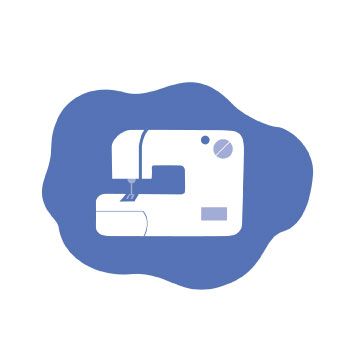
Your sewing habits can often make or break a project. Good habits enhance your results, while bad habits-which may at first seem rewarding-stymie success. In this article from Threads #164 (December ’12/January ’13), we asked our authors to share what they considered to be good habits for a better sewing experience.
It’s easy to believe that developing good habits requires herculean efforts. But to replace one behavior with another, you simply need to be aware of how you sew, rather than sewing on auto-pilot. Take small steps; change one behavior for each new project. Then, continue sewing with the new habit for every subsequent project. Repetition is the key. If you can’t identify your bad habits easily, below are some that Threads authors have observed, along with their suggestions for better habits that will improve your sewing.
Balance Tension Through the Feed Dogs You Go
Sewers sometimes drag a garment through the needle and feed dogs in an attempt to get a smooth, pucker-free seam or to move delicate fabric through the machine without snagging. But it can have the opposite effect and create other problems. Overriding the feed dogs this way can bend or break needles, damage your sewing machine’s timing, and stretch the seam-causing a different kind of puckering.
To eliminate puckers the correct way, adjust your machine’s tension setting, and use the correct needle and the correct size thread. Sometimes you do need to taut-sew, but do it the right way: Exert equal pressure on the fabric in both directions (forward and backward), so that the tension against the needle is neutral and so that the feed dogs can still do their job. – Judith Neukam
Fit as You Go
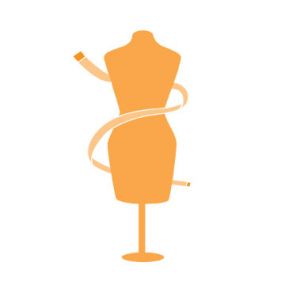
Waiting until a garment is complete to check the fit often results in extra work, especially if you have to rip out finished seams to correct the fit.
It’s very important to try on your garment at certain points during construction to check the fit and refine it. Pin-fitting along the way is easy to do and can save a lot of time in the end. -Mary Ray
Increase Stitch Length
Many sewers automatically choose a short stitch length for construction seams, but a 2.5-mm-long stitch is too short for garment sewing. When tension is placed on a garment’s cloth, the thread should break; but with a 2.5-mm stitch length, the cloth will tear around the stitches. It takes longer to sew a seam with short stitches, and they’re also hard to remove.
I recommend a 3.5-mm stitch length for basic construction seams. But increase your stitch length to 3.0 mm first. Once you become comfortable sewing garments with longer stitches, lengthen it again to 3.5 mm. -Peggy Sagers
Choose Fabrics Appropriate to the Garment Design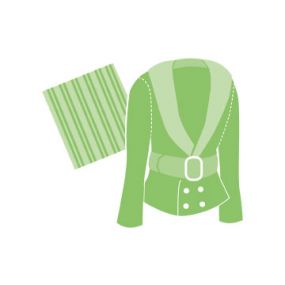
A project can fail from the outset if you don’t consider the characteristics of the fabric you intend to use when selecting a pattern. And the chances of project failure are increased if you choose a challenging design when you’re working with an unfamiliar or difficult fabric.
Start on the right foot: Select a fabric that is recommended for the pattern, and select an easy design if you’ve chosen a challenging fabric. -Claire Shaeffer
Get Comfortable with Hand Sewing
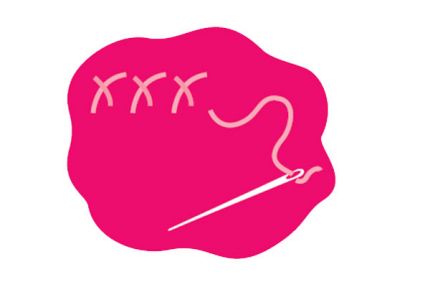
Many sewers avoid hand sewing at all costs. But hand sewing helps in constructing a garment every step of the way, and can often give a superior finish to any machine-stitched seam. For example, zippers can be frustrating to install by machine, but they’re comparatively easy to install by hand.
Hand-basted seams hold garment sections together better than pins. Your garment fitting will be more successful, and when it’s time to machine-stitch the seam, your stitches will be more accurate, and you won’t have to pause to remove pins. Also, hand-picked zippers are so easy to install, and they look beautiful. -Susan Khalje
Use the right scissors for the task–and keep them sharp!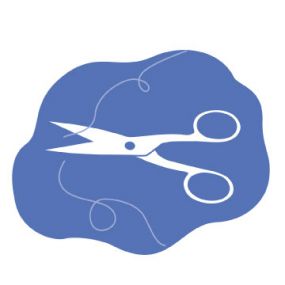
Economizing on good cutting tools will show in your work. Purchase quality scissors, and have them sharpened frequently. I own several pairs of my favorite scissors, and when one gets dull I send the dull ones for sharpening and pull out a fresh pair. Buy rotary cutter blades in bulk, and change them at the first sign of dullness. Keep an extra rotary cutter handle, and mount dulled blades on it for paper cutting. -Kenneth D. King
I teach a lot, and I’m always amazed at the lousy scissors people use. Not only are bad scissors tiring to use, they’ll shred your fabric, and that diminishes your results. It’s not a huge investment, and I recommend only three pairs: a very sharp 4-inch embroidery scissor with large finger holes; 5-inch tailor’s points (they go through just about anything); and 8-inch micro-serrated shears (they really grip fabric as you cut). Appliqué scissors are a nice addition; they’re very useful for cutting close to edges without cutting into the surrounding area. -Susan Khalje
Use More Pins
![]()
Many sewers pin patterns to fabric incorrectly, usually by pinning sparsely and in random spots. Or they temporarily secure patterns with too few weights and move them to cut another pattern section. With nothing holding the cut fabric to the pattern, the fabric can stretch out of shape.
To pin patterns to fabric, always set the pins parallel to the raw edge of the pattern, and pin within the seam allowance. This prevents the pins from marring the fashion fabric. Place pins in every corner of the pattern shape and space them every 4 inches along straight seams. Set pins closer together within tight curves. Leave the pins and pattern pieces in place until the garment pieces are ready to be sewn. -Louise Cutting
Leave Your Marks
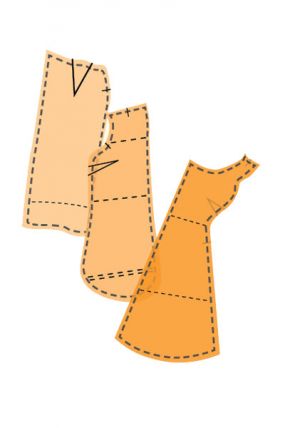
Sewers often remove pattern pieces from cut fabric before transferring the pattern markings, intending to transfer the markings at a later time. This just makes the task more difficult when you return to the project; garment pieces may shift and warp, and aligning edges and markings with their proper positions can be nearly impossible.
It is essential to mark all garment pieces before removing them from the cutting table and unpinning the patterns. Get it out of the way so you don’t have to fuss with it later. -Linda Lee
Warm Up for Better Performance

You would never run a road race without first stretching and warming up your muscles, nor would you sign an important document before scribbling the pen on a scrap of paper. The same goes for sewing. You need to loosen up physically to get the best results, especially with hand sewing.
If you are going to hand-sew, loosen up your fingers by practicing the stitches on a sample, or in a place on the garment where they won’t show. Sample all the stitches you plan to use before sewing them on the garment. Practice makes perfect! It will eliminate the fear of mistakes, you’ll hone your technique, and you’ll get better results. -Anna Mazur
Invest in Quality

Economizing on sewing tools and materials may seem like a good idea, but it can degrade the quality of the garments you sew. Dull, damaged, or incorrect needles will ruin a good piece of fabric and wear on your sewing machine. Purchasing cheap thread is another example of false economy.
Remember that different needles are designed to work best on specific fabrics, and that thread holds your entire project together. Spend money on thread and needles. Buy the correct needles for each fabric you use, and use a fresh needle for every project. Purchase quality thread; it holds your garments together better, runs through your machine more smoothly, and doesn’t leave residue in the tension mechanism. -Kenneth D. King
What tips do you have for breaking bad sewing habits? Please share them below!


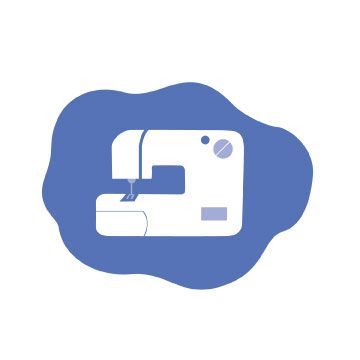
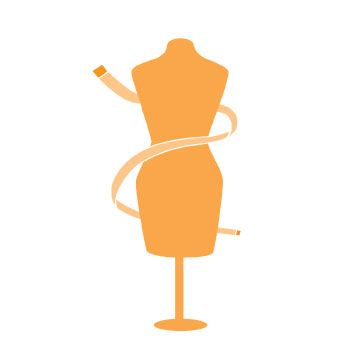

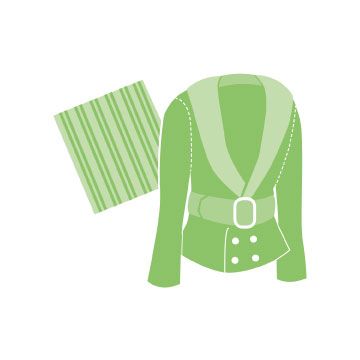


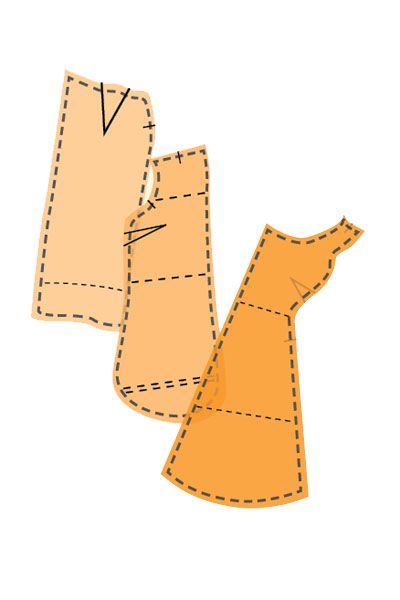


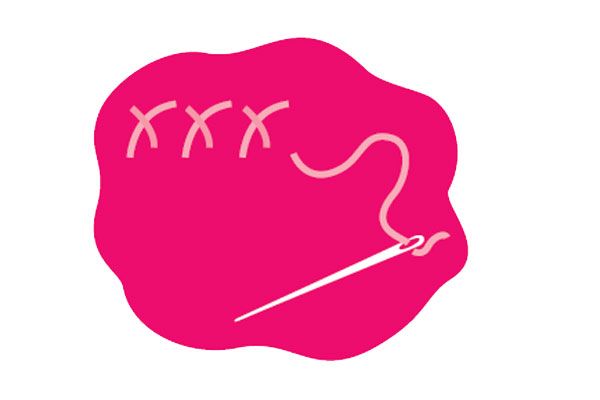
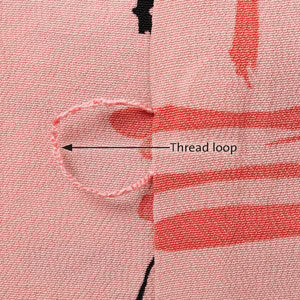
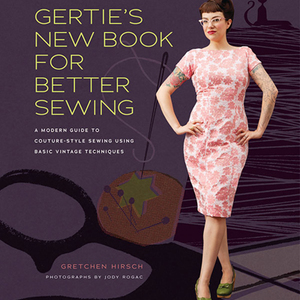
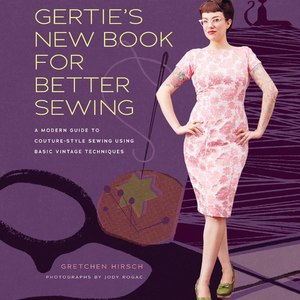
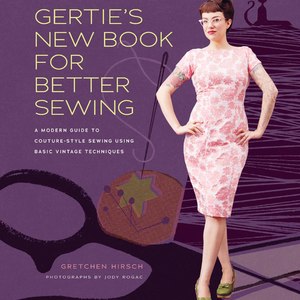
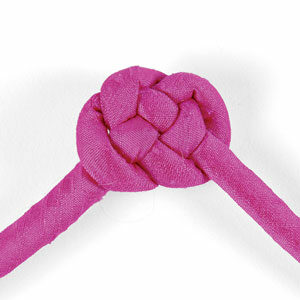

























Great tips, In addition to the tips I would love to see specifics, for example names of good quality threads, the name of a resource for hand stitches, a resource for matching needles, threads and fabrics. Thanks
One of the things that makes a huge difference is to iron as you go . I think it can make or break any project
I would like to add that you should press as you go. My home ec teacher said "Never let one sewn seam cross another without pressing it first." I thought she was nuts and a waste of time. But the more I have sewn specialty fabrics, linens, and others I have found this makes the difference between an amateur or professional looking job.
I think figuring out your individual ergonomic relationship of table to chair to sewing machine is crucial for good construction, let alone a healthy back. When I lowered my table and chair to the correct height - quite low to the ground with the table at 25" - I found I could sew much longer without fatigue. Remaining focussed while sewing is essential for a happy ending!
Agree with divaweava. Assess your table and chair height and adjust to the most comfortable and do not skimp on a comfortable supportive chair, took me quite awhile to figure that one out after backaches, neck aches and raging headaches. Most of us just use whatever is a spare in the house with seat pads to cushion, not the way to go!
This won't apply to everyone, just us Lefties. Be careful where you have your scissors sharpened. You need to test them before accepting them. If the sharpener is right handed the scissors may not be right for you especially if they need to be adjusted by tightening the screw.
I think pressing each and every seam is important. Another pet peeve : Little strings hanging off the garment. So tacky !!
How do you manage cutting out your fabric when you only have a small table available? What is the ideal height for a cutting table. I dream of having one, but I don't know exactly what I should be looking for.
Excited to finish a project late at night often results in mistakes when you're tired. Finish one of the tasks (sewing in a sleeve?) and go to bed. A fresh start the next day can make all the difference in the world in the final result.
I sew all day long, mostly on silk charmeuse.
My cutting table is tall enough for me to only have to bend slightly to reach across...my table is 48" x 96" with a grid rotary mat the same size.
I use excellent scissors and have a few pair so I can switch and have a pair while the other is being sharpened.
I love my table, but it is good lighting that is imperative.
An excellent secretary chair at the machine is also helpful,
as is a mat on the floor like chef's use in professional kitchens, to help with fatigue issues.
I always start a new project off with new needles, also the right needle and right weight thread...I was a clothing inspector in a Garment Factory and one of the biggest part of constructing any garment is pressing as you go...
In response to ozviking: Although it's not ergonomically correct, a folding cardboard cutting board laid on your bed will work for larger projects until you can find a place for a large, tall cutting table. I used this for years in a small apartment even though it was hard on my back. Now my sewing room is in my laundry room and I placed a hollow core door over my front load washer and dryer (with a measuring tape secured along the front edge). It is a good height and gives me plenty of room for almost anything.
I have very limited room for sewing. For a cutting table I use a folding table that I put on bedrisers to raise it to the correct height. When I am done, everything folds away.
My only issue with this is pushing the use of pins. My experience has always been to use less pins. The reason is that the pins for one take more time and it does off set the amount of fabric when cutting.
Ironing is indeed a life saver to do while constructing a garment. It will make your finished piece more professional and I use a cloth over my fabric when I iron.
Dear Ozviking,
I have sewed in small apartments too, although now I have a home. I can't believe it took us so many years to come up with this solution. I formerely cut out fabric on a cutting board placed on my queen size bed. Talk about an aching back! The kitchen table was a possibility, but mine's too small.
My husband gave me a pair of saw horses and a partial sheet of masonite. The saw horses can be made any height you need. You can disassemble this at any time. If needed, you can even break down the saw horses, if you use the new clamps sold for this purpose (I think Stanley tool makes them).
My masonite is small enough not to need bracing below (I'm not sure of the dimensions: maybe 3X4 ft). I place my cutting board/rotary mat on top of this and can cut standing up without pain. I also sometimes use it as a basting station, although I need to sit on a stool with a back instead of a chair.
I was surprised to read about sewing garments with a longer stitch length.
I have found that by keeping several projects going at once, I can switch from a difficult step on one garment to another fresh project and keep the work going without getting frustrated. Later, what seemed difficult is easier solved. Also, keep a fun project nearby to get the creative juices flowing...makes the boring projects easier to complete! Debbie Florez of 'Your Wildest Seams'
Couldn't believe it when I read the article on 10 Best Sewing Habits. Number one should have been Start with Quality Equipment. Over Thanksgiving my daughter from MN was in and wanted me to help her with a substantial costume sewing project. When I saw what she brought the first words out of my mouth. "Let's use some good scissors and pins." I have a huge soapbox about people who don't like to sew probably started out with cheap tools. OOPs, I almost got it out, but it was stated very well in the article and probably reached a lot more people than I ever could. Thanks
I think the most important consideration when deciding the height of your cutting table is your own height. You need to be able to easily reach the middle of the table, but not have to bend to cut. I use an old, large kitchen table which I raised with 6" blocks of wood, with the tops slightly hollowed out to stop the table slipping off them. It works perfectly and I wouldn't use anything else.
I have been experimenting with sewing all flat sections that don't join at once and after pressing those seams, joining them to each other. With a skirt, I sew in the zipper before joining the front to the back on the right side which makes working on a flat surface with the zipper easier.
I, too, was surprised to read about increasing the stitch length. I ran a couple samples of 3 and 3.5 and like the look. I'll do that on the next garment I make.
Before pressing each seam open, it is important to meld each seam. This is very simple to do - simply press the seam flat. It will give your garments a more finished look.
I'm surprised that no one has mentioned basting. It's a tremendous help with fitting and speeds up machine sewing. Sure it takes a little longer, but well worth the effort. Also, use GOOD PINS!!! Iris are the only ones I've used for decades.
Whoopsies! I'm blatantly ignoring Claire's advice, making her Vogue 8333 pattern with Italian silk dupioni. In my defense, I scored it at cost years ago, never got around to using it and I think it will look awesome. Better than letting it go to waste I suppose.
My mom the upholster/woodworker/renaissance woman is making me a full size layout table, but in the mean time I've been using a table from IKEA with adjustable sawhorse style legs. For the price it's a great system.
All wonderful tips, thank you. One thing I have always done is to test fabrics for the best marking approach. Some of the heat-removable inks do leave permanent marks. Some chalk doesn't survive construction. The no-fail of markings: tailor's marks with thread, especially for delicate fabrics. Once you get used to them, they are a breeze.
1. Unless you are actually sewing, take your foot off the petal. This seems obvious, but I have had so many close calls when teaching children.
2. Never sew when you are tired. It should be fun, not stressful.
3. If you prick yourself with a pin, and you will, go do something else for three minutes. A drop of blood on the front of a wedding gown will teach you to follow this rule. How do I know?
4. OHIO. Only Handle It Once. When cutting out, after each piece, do the marking right there and then. Once you establish this habit, you will never have to go back to clip a notch or mark a dart.
5. Treat yourself to a pair of thread nippers and keep them on the right side of your sewing table. They are made to grab and clip in one fluid motion. So much better than scissors.
6. When you are wearing something you made, look around the room and realize that you are probably the only one there who did this. Yes, you are that good and that special. It’s OK to be proud of yourself.
My biggest tip: don't cut or make decisions late at night. This is almost always disastrous. Get a good iron. I have a Sapporo 527 gravity feed iron. It's heavy and presses beautifully. I have it on a WIFI connected power strip that I have automatically turn off at 7:00 pm. No sewing after that! Evening is for knitting. Get good pins, and lots of them. I pin all seams thoroughly and it makes such a huge difference in sewing, especially on seams with some curve to them.